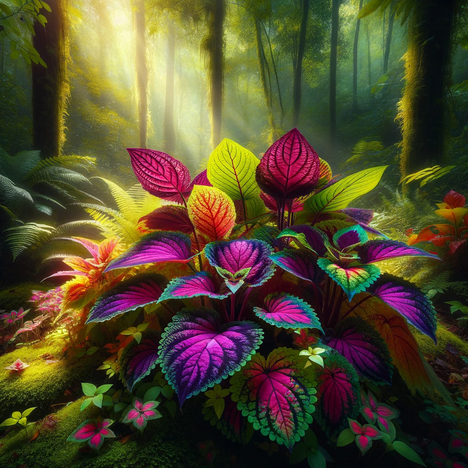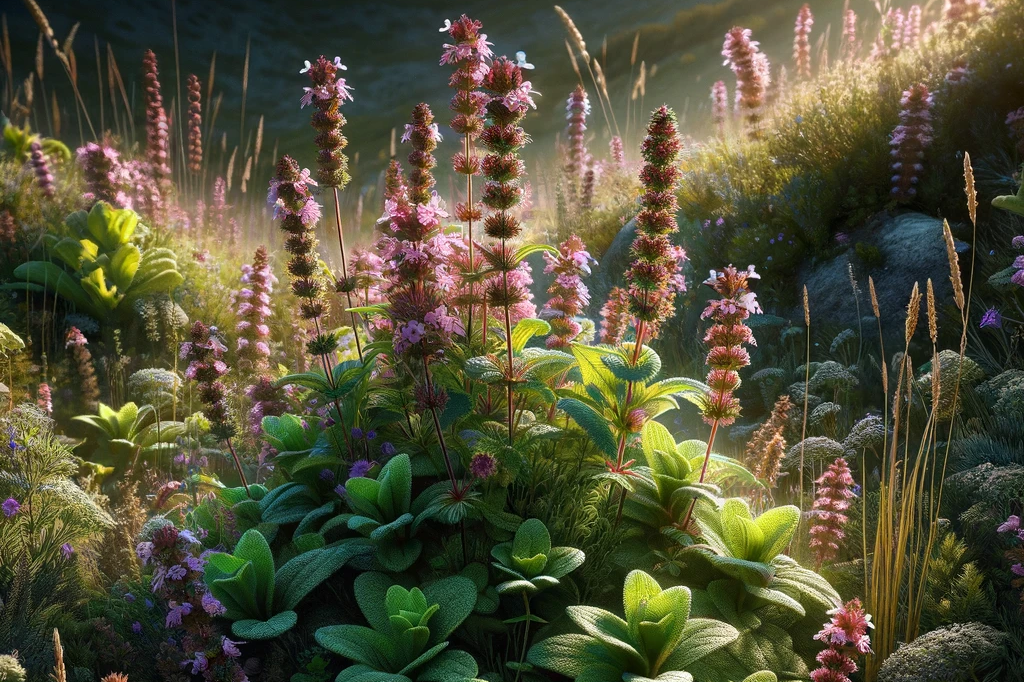Colored nettle

What is variegated nettle?
Colored nettle, known by its botanical name Coleus, is a genus in the labiate family (Lamiaceae) that is prized primarily for its diverse and colorful leaf patterns. Originally native to the tropical regions of Asia and Africa, the variegated nettle has spread to gardens and homes worldwide due to its attractive appearance and adaptability.
Advantages of the variegated nettle in the garden
Aesthetic enrichment
With its wide range of colors - from deep burgundy to bright green to eye-catching yellows and pinks - the variegated nettle offers exceptional visual diversity to any garden or indoor space. Its ability to brighten shaded areas makes it a valuable addition to garden landscapes in need of splashes of color.
Easy care
Variegated nettles are relatively undemanding to care for. They do well in both sunny and semi-shady locations and require only moderate watering. These characteristics make them a good choice for novice gardeners or busy plant lovers.
Disadvantages: A potential risk to dogs
Toxicity
The biggest concern associated with variegated nettles and dogs is their potential toxicity. Although pale nettle is not classified as highly toxic, certain ingredients can cause discomfort in dogs. Symptoms of mild poisoning may include vomiting, diarrhea and lethargy. It is therefore advisable to place nettles out of reach of your pets.
Skin irritation
In addition to the internal effects, the plants can also cause skin irritation in dogs, especially in sensitive or allergic animals. Contact with the leaves can cause redness, itching or a rash, which is unpleasant for the dog.
Handling variegated nettles: safety measures
As a responsible dog owner, you should take the following precautions when cultivating wild nettles in your garden or home:
- Make sure the plants are out of your dog's reach to avoid accidental ingestion or skin contact.
- Monitor your dog for signs of a reaction if they have been playing near wild nettles and consult a vet if necessary.
- Find out about plant-based alternatives that are both safe and attractive for your garden.
The variegated nettle is undoubtedly an asset to any garden or indoor space, thanks to its spectacular variety of colors and ease of care. However, your dog's health and safety should always take priority. With the right precautions, you can enjoy the beauty of the variegated nettle without jeopardizing the well-being of your four-legged friend. Ultimately, it is the informed decision and mindfulness of the owner that creates a harmonious habitat for all inhabitants - both plant and animal.
Properties 8
Are you looking for other ingredients with a specific property?
Just click on them to find more.
If you notice any signs of hypersensitivity or poisoning in your dog, you should see your vet immediately. We are not a substitute for a vet, but we try to be as accurate as possible. Every dog reacts differently and we recommend you get a second opinion or consult your vet if in doubt.
Stay healthy and take good care of your four-legged friend!😊
Similar to Colored nettle
Haemanthus albiflos belongs to the Amaryllidaceae family and is native to South Africa. This perennial bulbous plant is known for its robust, dark green leaves, which offer an attractive appearance...
Cattail(Acalypha reptans), often known as dwarf acalypha or miniature fire dragon, belongs to the spurge family(Euphorbiaceae). It is a ground-covering perennial known for its bright green leaves...
Three-master flowers, also known by their botanical name Tradescantia, are a genus of about 75 species of perennial plants that are common in America's gardens and homes. They are characterized by...
Savory herbs, also known by their botanical name Satureja, include a variety of species that are mainly used in cooking and traditional medicine. Among the best-known representatives are savory...



